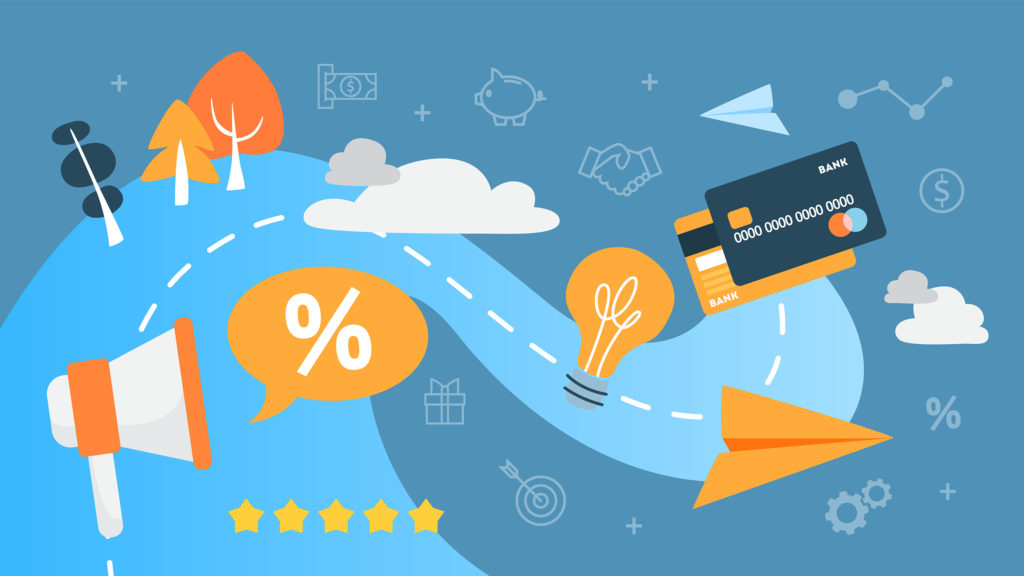Learning Hub | E-Commerce
Lifetime Fans, Lifetime Value: Building Loyalty Programs For E-Commerce
November 18, 2020 | Jon Teodoro

“Are you a rewards member?”
“No, not interested.”
For many, that question is a non-starter. There’s a lingering stigma associated with department store credit cards, unwanted mailers, and promotional email blasts jamming up the inbox.
And the truth is, lots of brands still use the dangle-the-carrot trick:
Customers get 20% off if they open a credit card today but then forget about it for months until they have to pay interest down the line.
That’s not loyalty. The smartest brands have figured out how to build loyalty programs in a way that’s both non-invasive and genuinely valuable to their customers (and ultimately to the brands themselves).
This is where e-commerce and direct-to-consumer, especially, are winning. E-commerce is the ideal platform for tracking and increasing customer lifetime value, because it gives a much richer picture of the customer than in-store behavior does.
What we’ve left behind at the physical store, however, is actually something that can boost e-comm’s effectiveness: customer service. Loyalty programs aren’t just a way to harvest data, they’re an opportunity to define your brand by treating customers with respect.
In with the old, in with the new
Recruiting existing customers into your loyalty program tends to be easier than winning over new ones. But with a sophisticated program, you’re that much more likely to build an ongoing relationship with newcomers.
To drive value, increasing paths to purchase is a no-brainer. The more touch points you have, the more surface area you have for transactions. But value comes in different forms.
If you think about loyalty as an entire ecosystem, you begin to understand how the transactional part of customer engagement is just one piece.
Loyalty isn’t just discounts, rewards, and “like” purchases (a la Amazon) but also opportunities to improve a customer’s understanding of your brand.
How have a customer’s tastes changed in the past year? How can you make it clear to them that you’re aware of the changes and you’re evolving your offerings to accommodate them?
Growing trust with loyal customers, old and new, is powerful.
Diversify the relationship
What many brands miss is the opportunity to engage with areas of a customer’s life that are not “native” to the brand’s world. By partnering with a travel or lifestyle brand, for example, retail could offer rewards connected to a customer’s other hobbies and passions. Loyalty can be rewarded in a cross-industry approach that’s more connected to an individual customer’s life and preferences.
Amazon, clearly, has set the standard for cross-promotion. “You liked this, you’re going to like this.” But a loyalty program has the proprietary data to drive more engagement and sales specific to the brand in question. You can test messaging, the frequency of engagement, and the nature of rewards to give a far more personalized experience than Amazon.
Over time, loyalty can account for life stage, career stage, family stage…
It’s an age-old tool, but opportunity still exists in creating a VIP element, or “premiumizing” the customer experience within your loyalty program. Early access to new inventory, access to limited inventory, remote consultations, personalized look books or pre-packed brand kits. These are methods of adding value that feel exclusive but aren’t purely transaction-based. They’re the tactics embraced by D2C brands like Stitch Fix and Blue Apron.
Increasing the lifetime value of a customer requires becoming closely in tune with the arc of their life. Data makes this more possible now than ever.
Data is your personal touch
A loyalty app can be incredibly useful, but it’s not essential. Your website itself can serve that function, with support from an intelligent email program that brings functional elements of the website into loyal fans’ inboxes.
Nintendo is absolutely best-in-class here, with a robust email program that strikes a balance between promotional and personal.
Each section of the email is populated with creative that’s specifically relevant to a user’s interests and playing/buying habits.
Customers are increasingly aware of a brand’s access to their data, and they both expect and desire at least some degree of personalization.
How do brands put data into motion?
The more you can use data to replicate the “touch” of the in-store experience, the better.
That includes accurate representation of your inventory on your website—not just availability but the actual nature of the item, down to texture, fit, feel, taste (depending on your industry).
Thanks to advances in AI and augmented reality, technology is now available to turn your website into a veritable window shopping experience for your customers, and the more accurate the representation online, the more likely customers are to buy. From there, you can extend the experience through email, social, SMS, and even chatbots to build out your full loyalty ecosystem.
Living, breathing loyalty
Most elements of a loyalty program need to be standardized for all consumers. Otherwise there’d be no controlled experiment to help you optimize.
But a well-designed loyalty program may provide one customer an experience that is entirely different from that of the next customer. And customers will have different needs over time. Their lifetime value hinges on the value you provide them.
In a sense, your loyalty program is a living thing.
